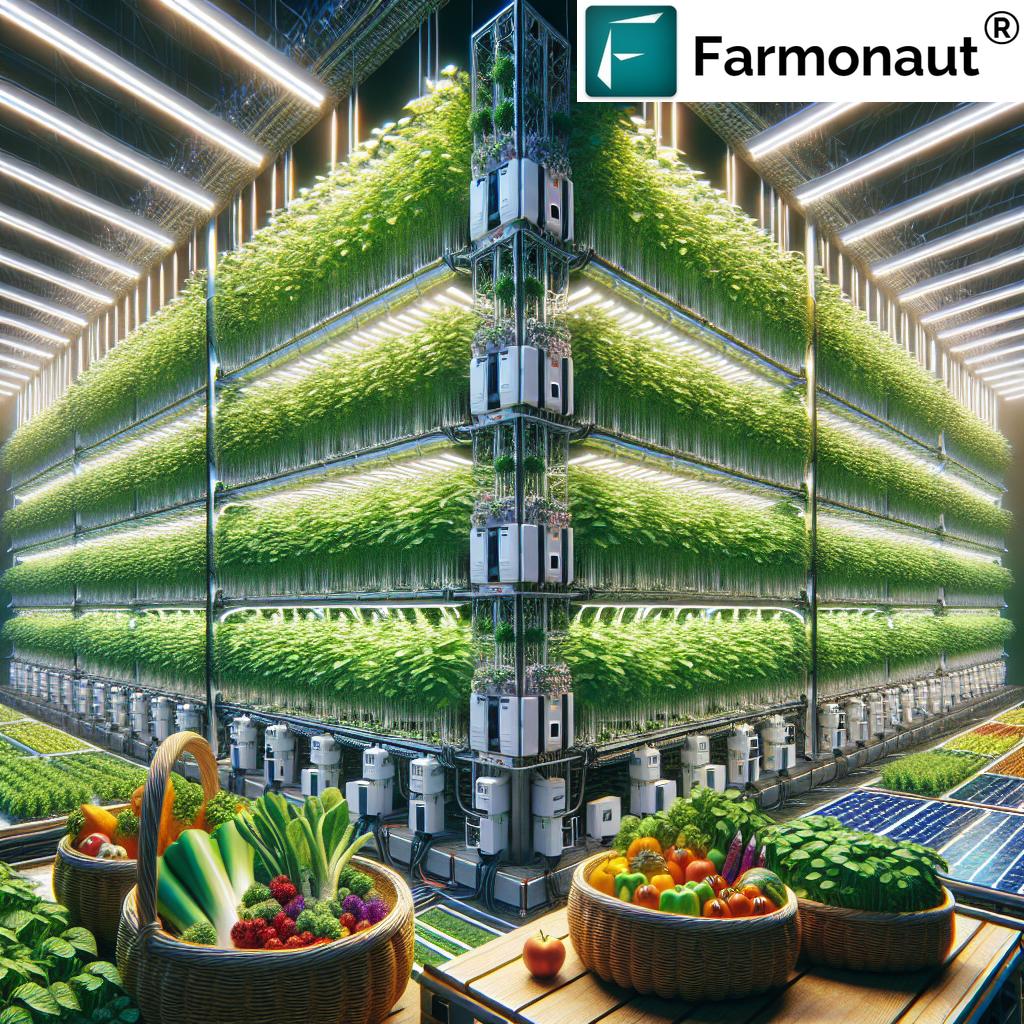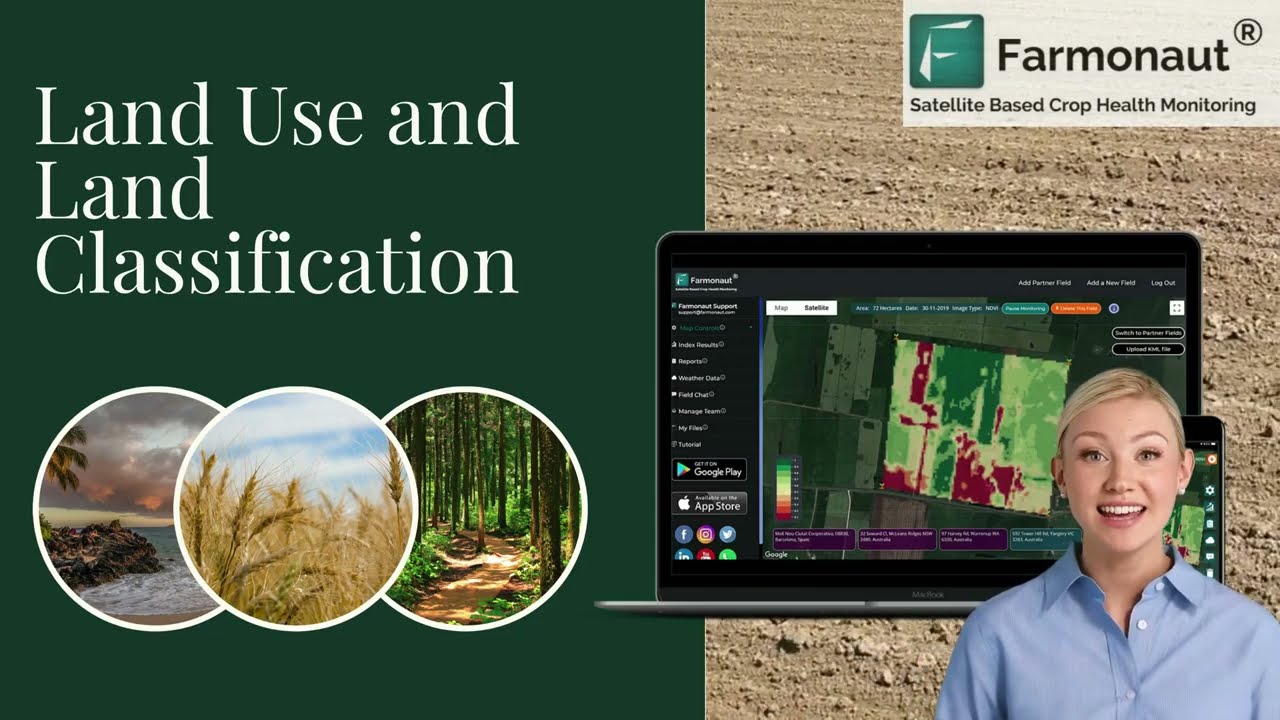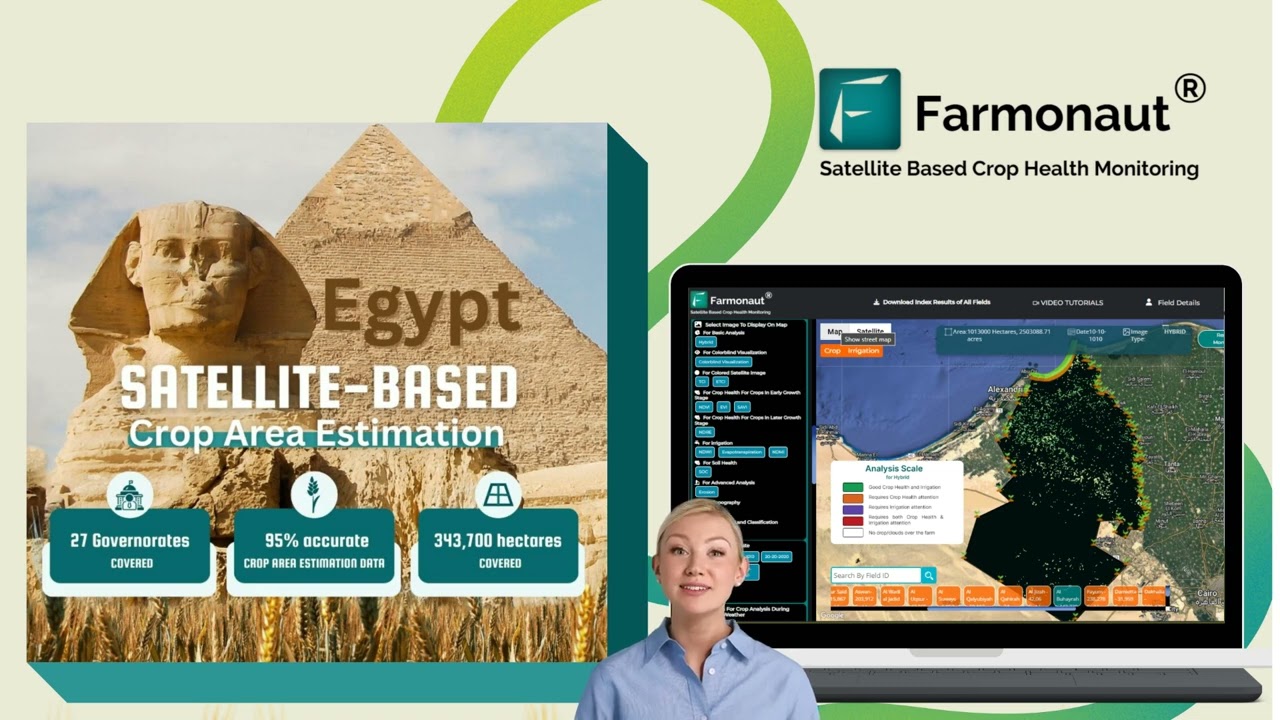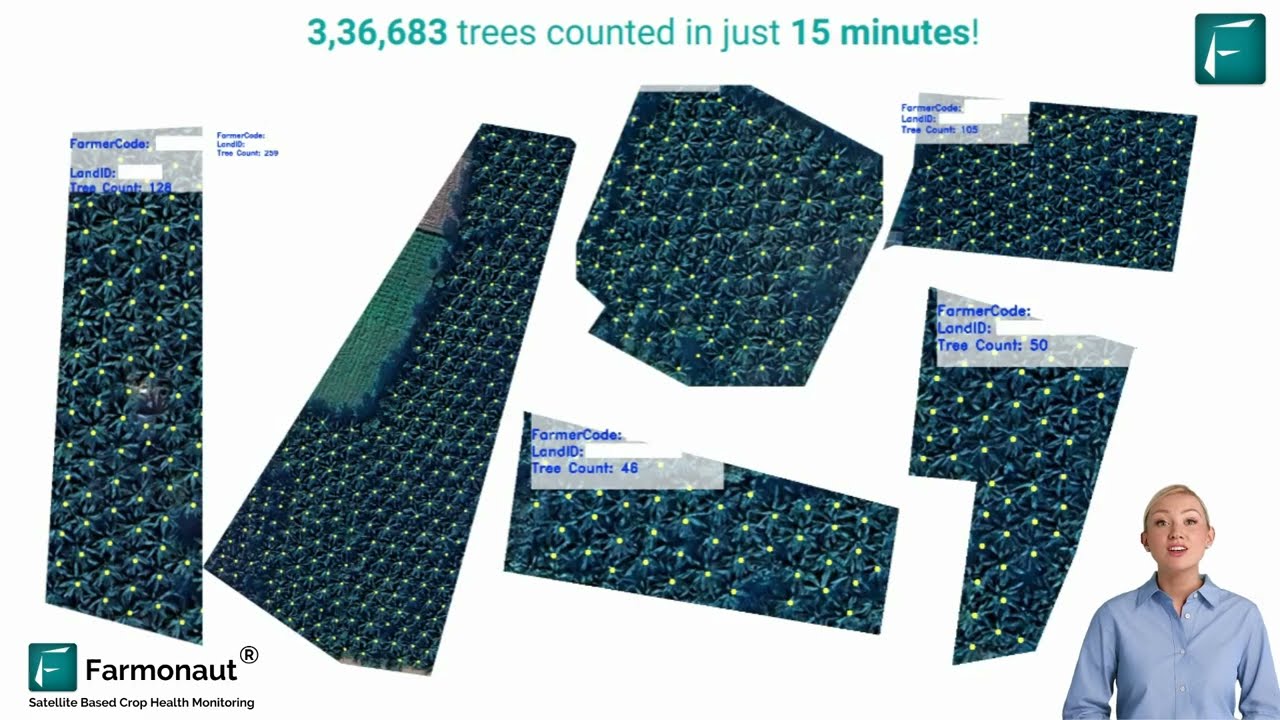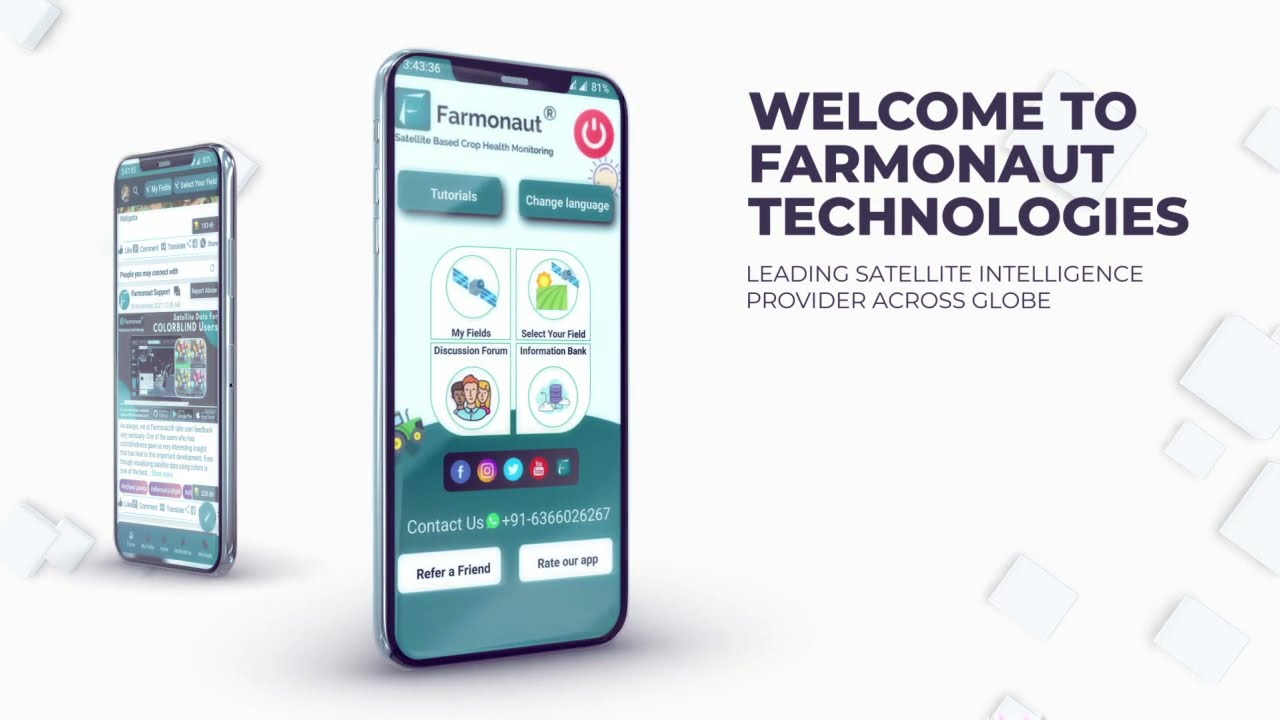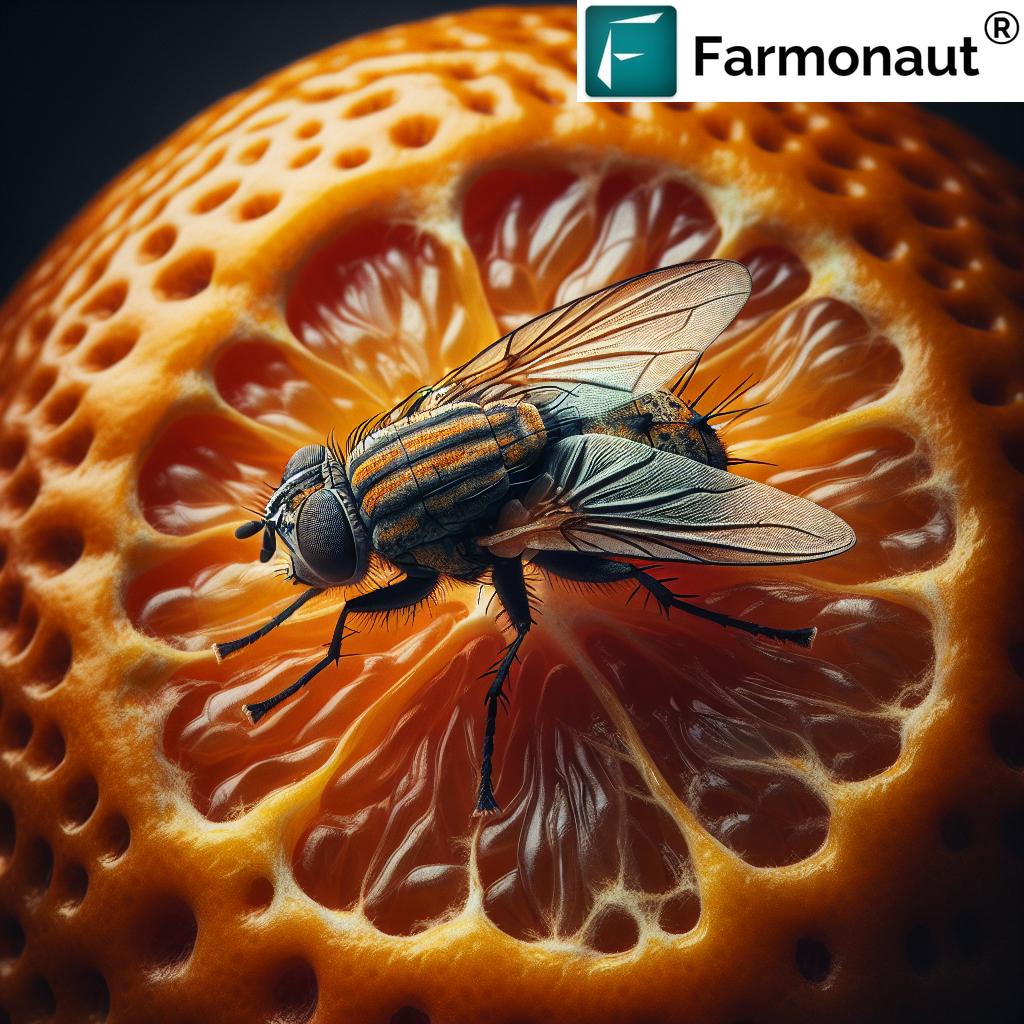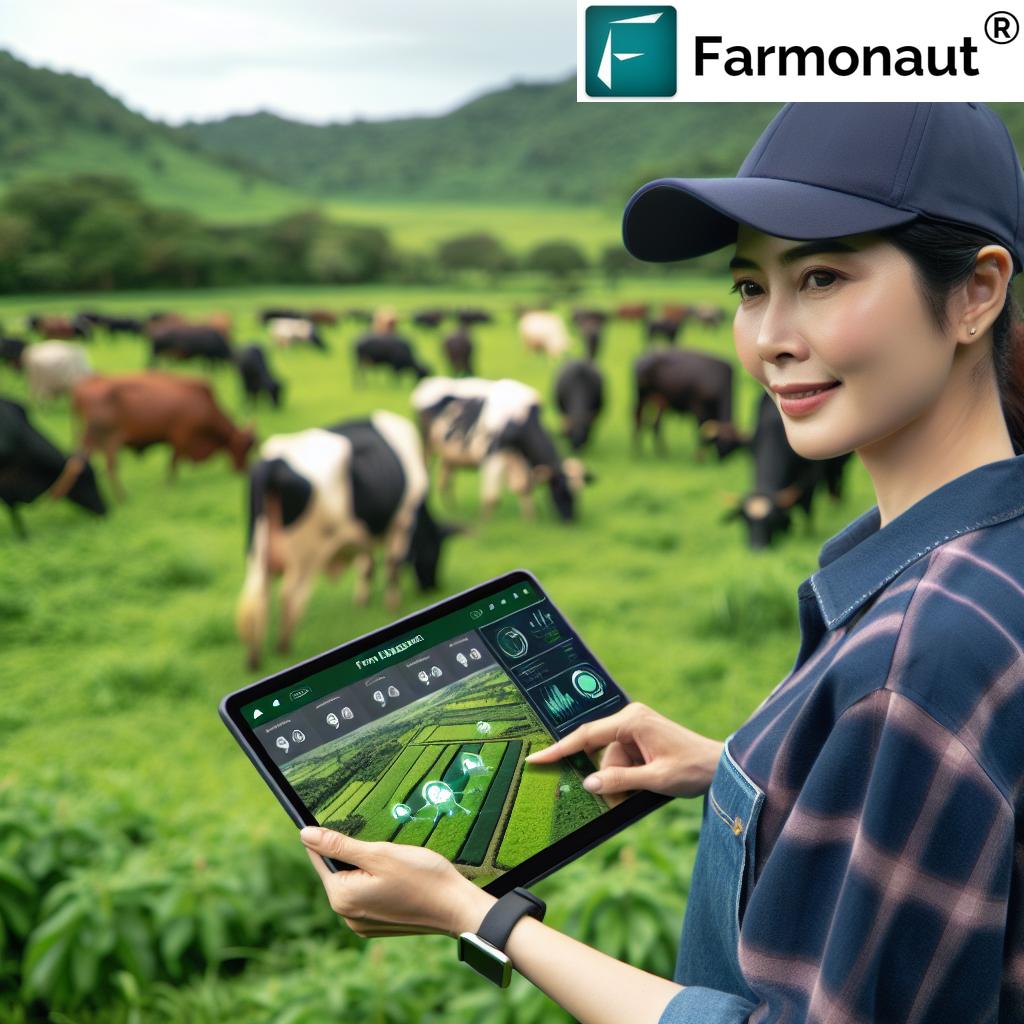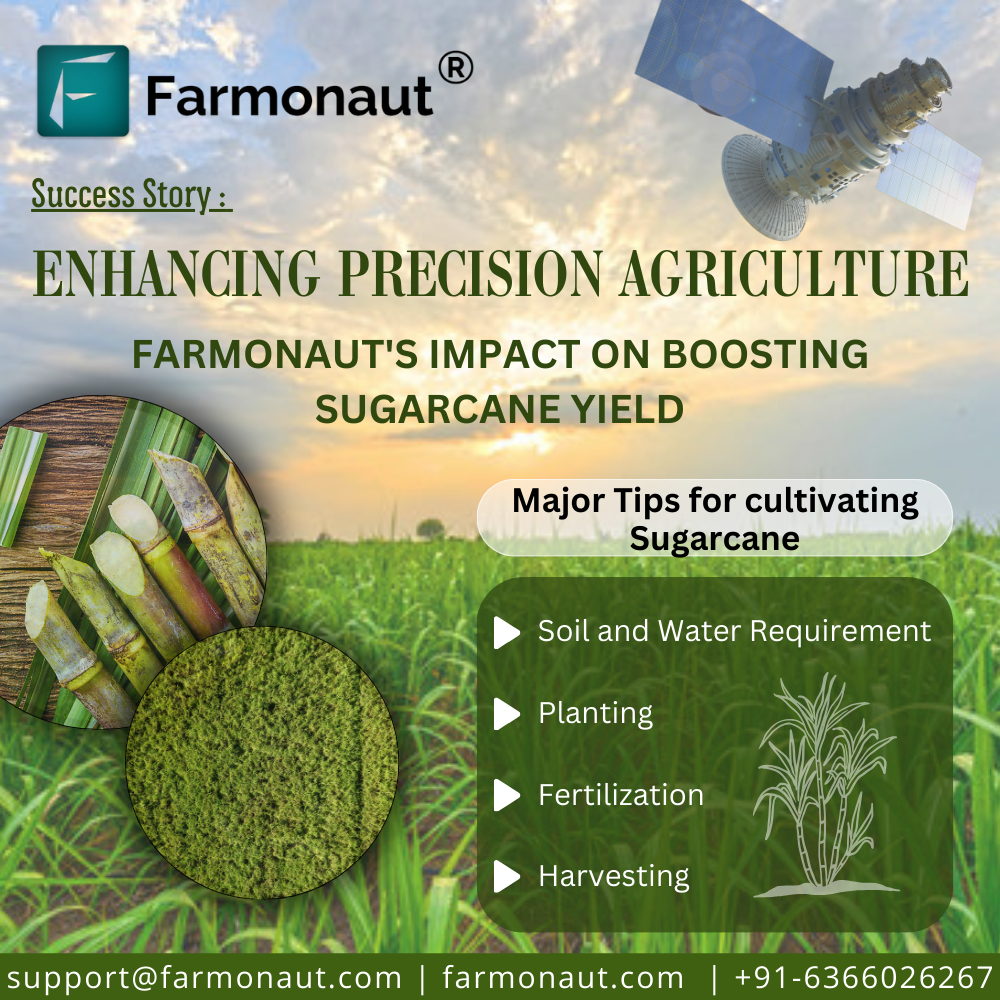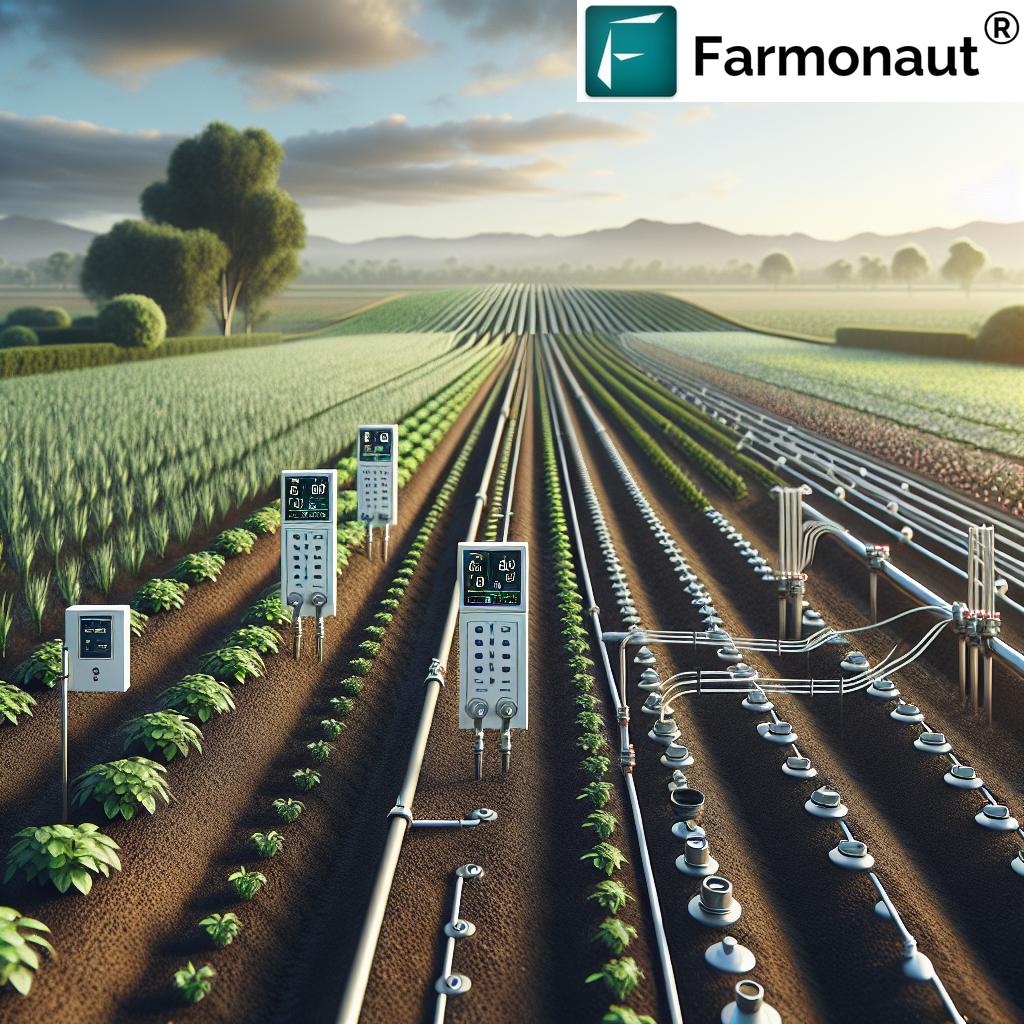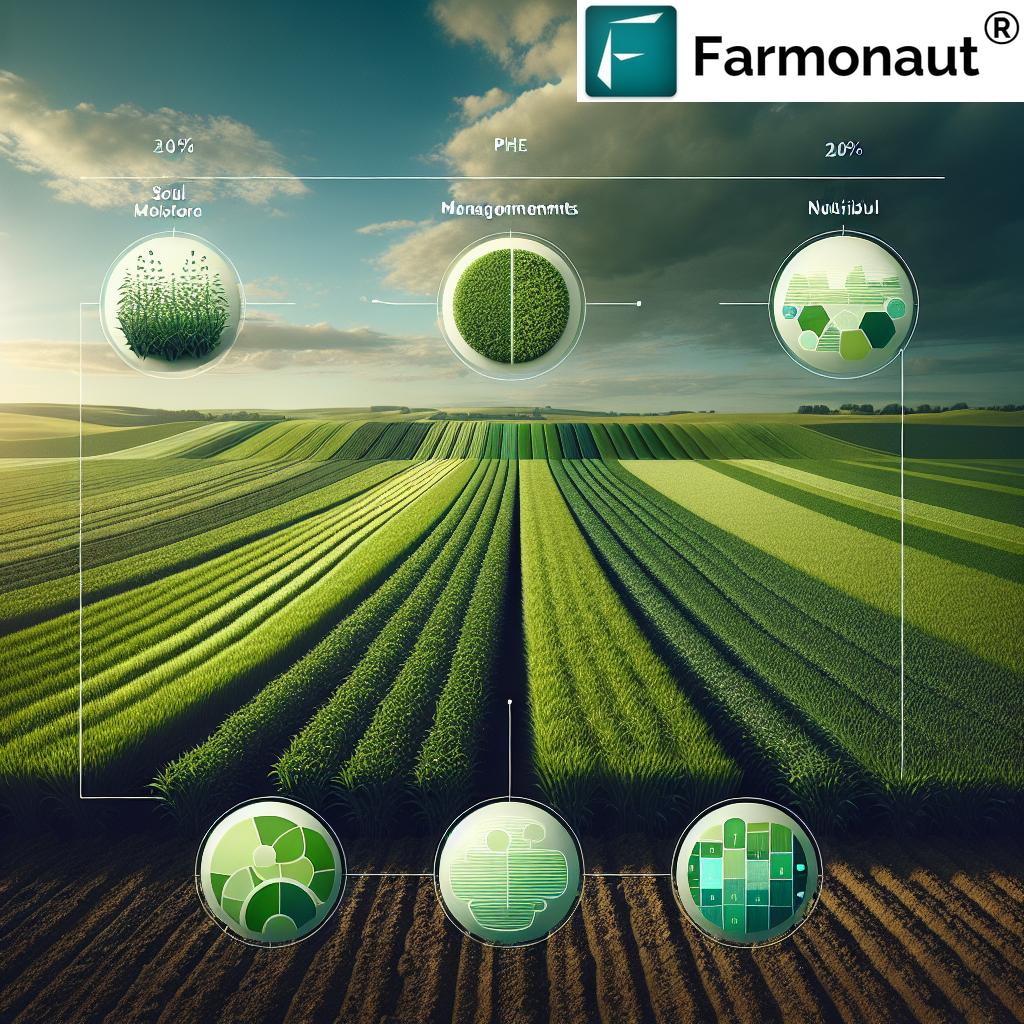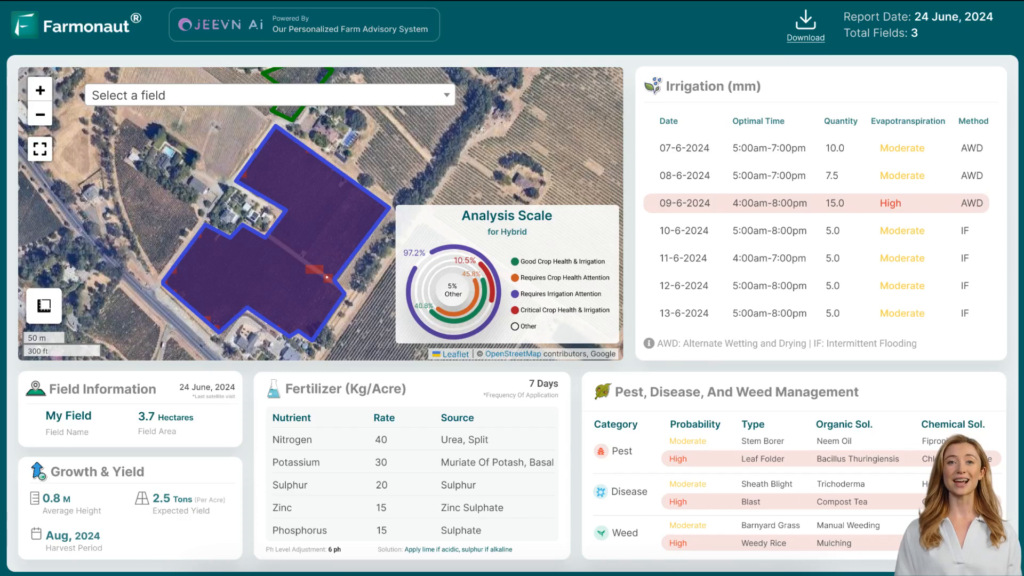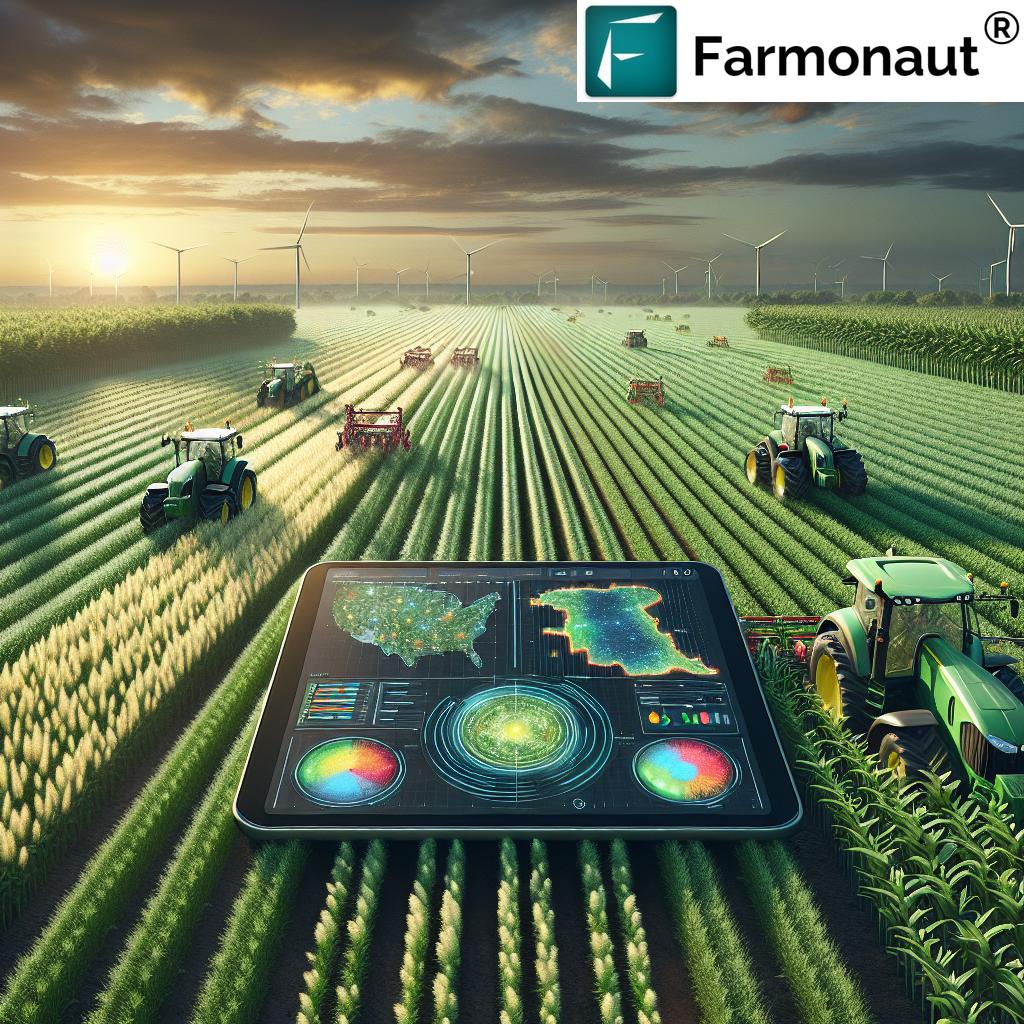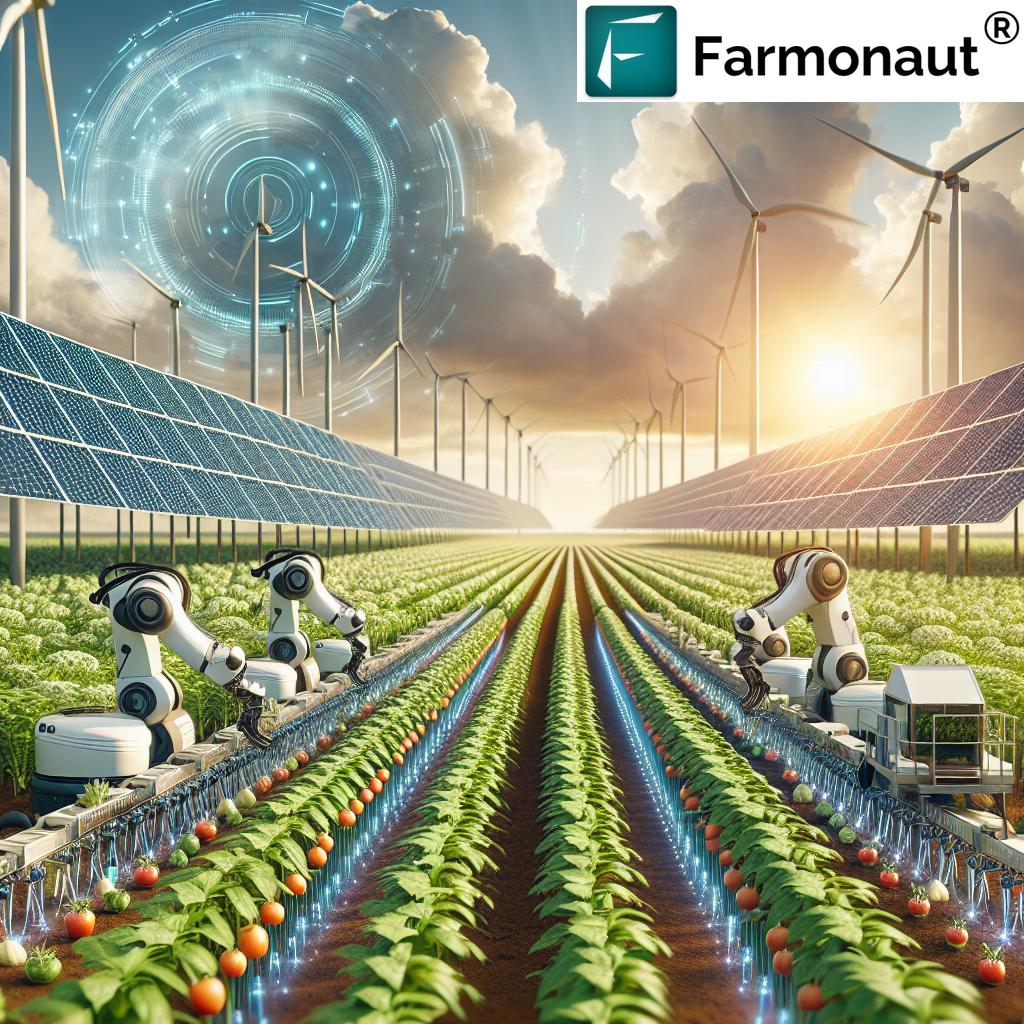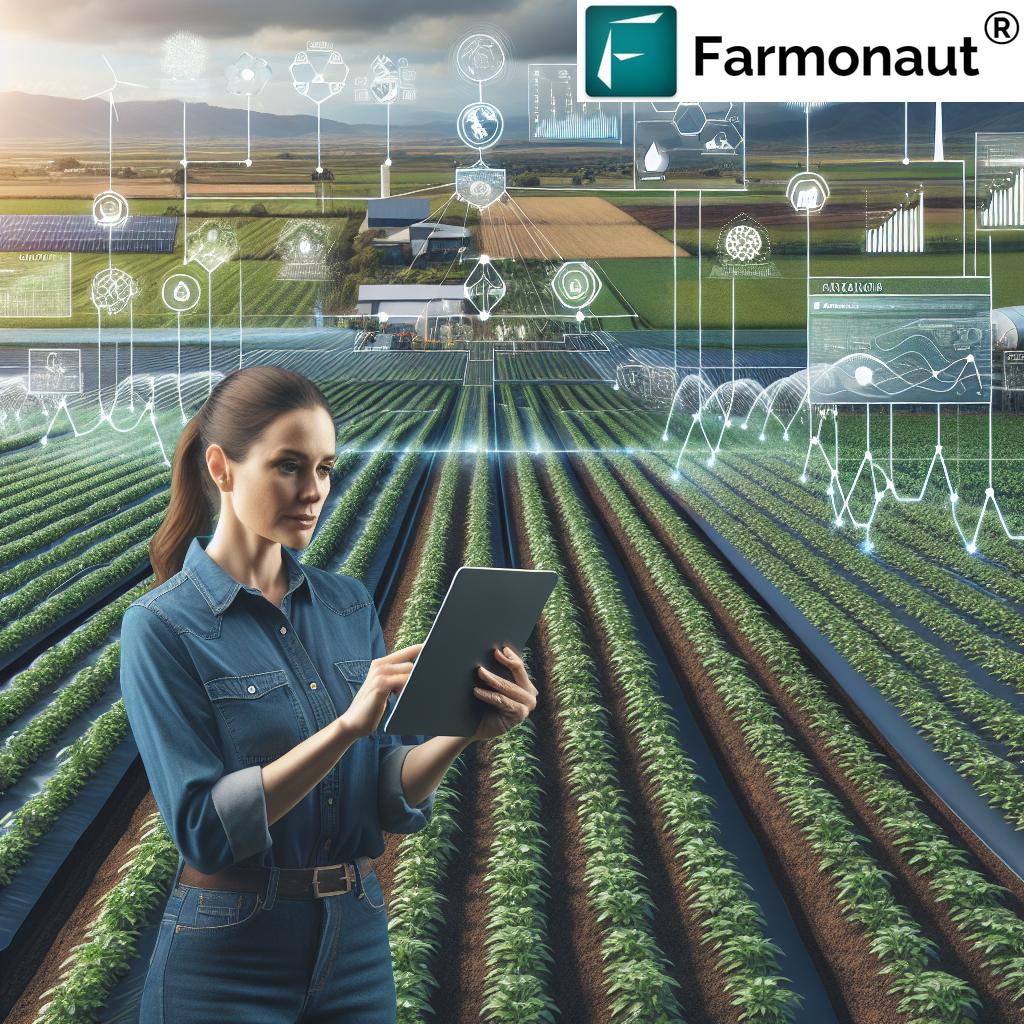Sustainable Innovation Agriculture: 10 Transforming Technologies
- Introduction
- Precision Agriculture Technology
- Vertical Farming Solutions
- Agroforestry Systems & Practices
- Conservation Agriculture Techniques
- Integrated Pest Management (IPM)
- Aquaponics Innovations in Food Production
- Nanotechnology & Nanosensors in Farming
- Smart Farming with IoT Integration
- Biointensive Farming Methods
- Climate Resilient Crops Development
- Renewable Energy in Agriculture
- Comparative Benefits Table
- Farmonaut and Sustainable Agriculture Practices
- Challenges and Future Directions
- FAQs
- Conclusion
Introduction
As the global population grows and climate change intensifies, sustainable innovation agriculture emerges as the cornerstone of a resilient, productive, and equitable future. The integration of smart technologies and sustainable practices in farming, forestry, and food production enables us to meet current demands without sacrificing the Earth’s ability to support generations to come. From precision agriculture to vertical farming, a new era of transformative technologies is revolutionizing how we grow crops, steward our land, and manage vital resources like soil and water.
This comprehensive guide explores ten cutting-edge sustainable agriculture solutions—each addressing soil health, boosting crop yields, increasing resource efficiency, and supporting environmental stewardship. Whether you’re a smallholder looking to increase productivity or a policymaker shaping the future of global food security, these innovations equip you with actionable knowledge and proven methods to thrive in agriculture’s next chapter.
1. Precision Agriculture Technology: Transforming Sustainable Farming Practices
Precision agriculture technology represents a paradigm shift in agricultural management by using advanced tools—GPS, drones, and sensors—to monitor and manage field variability at unprecedented scales. By precisely applying water, fertilizers, and pesticides, farmers achieve higher yields while drastically reducing waste and environmental impact.
- Increased Productivity: Data-driven insights enable targeted interventions, improving crop health and boosting yields up to 20%.
- Resource Efficiency: Real-time monitoring ensures optimized use of water (through precision irrigation), fertilizers, and pesticides—conserving resources and reducing harmful runoff.
- Environmental Stewardship: By mediating input application, precision agriculture minimizes chemical leaching, protecting soil health and biodiversity.
Solutions like Farmonaut’s large-scale farm management leverage satellite-based crop health monitoring and AI-driven advisory systems to democratize precision agriculture tools for farms of every size. Through these platforms, even smallholder rural farmers gain access to in-depth, actionable data for increasing climate resilience and financial savings.
- Discover our multi-platform, subscription-based app for real-time crop and resource management for individual farmers and agribusinesses.
- Monitor and reduce your farm’s carbon footprint with advanced reporting for improved sustainability and environmental compliance.
Precision agriculture not only supports economic viability and social equity, but also integrates seamlessly with existing traditional farming methods, making the transition to smart agriculture both practical and scalable worldwide.
2. Vertical Farming Solutions: Sustainable Methods for Maximizing Yields
Vertical farming solutions redefine conventional agriculture by cultivating crops in vertically stacked layers inside controlled indoor environments. This technology offers a radical improvement in resource efficiency and land use, using up to 95% less water than traditional farming.
- Land Conservation: Vertical setups require significantly less land, making urban agriculture and local food systems viable even in metropolitan areas.
- Water Savings: Closed-loop hydroponic or aeroponic systems curb wastage, crucial for sustainability in water-stressed regions.
- Year-Round Production: Climate and pest control enables consistent, high-quality harvests regardless of external conditions.
- Reduced Transportation Emissions: Growing closer to consumers slashes food miles and the associated carbon footprint.
Farmonaut’s advisory services can guide users in resource management for urban, vertical, or greenhouse operations—delivering insights on plant health monitoring and efficient irrigation schedules.
3. Agroforestry Systems & Practices: Merging Trees with Productive Agriculture
Agroforestry systems integrate trees and shrubs with agricultural land, enhancing biodiversity, increasing soil fertility, and supporting climate resilience. Unlike monoculture practices, agroforestry enriches biological diversity and strengthens ecosystems.
- Soil Health: Tree roots stabilize soil, prevent erosion, and cycle nutrients to crop roots.
- Climate Benefits: Agroforestry stores carbon in biomass, mitigating climate change while offering shade and windbreak protection to delicate crops.
- Economic Viability: Multiple sources of income (timber, nuts, fruits) diversify farm revenue streams.
- Enhanced Biodiversity: Provides habitat for wildlife, beneficial insects, and pollinators.
Crop and forest plantation advisory from Farmonaut assists in mapping mixed-use landscapes, maximizing biological and economic productivity across farms, plantations, and forests.
4. Conservation Agriculture Techniques: Building Sustainable Soil Health
Conservation agriculture champions healthy soils through practices like minimal tillage, permanent soil cover (cover cropping or mulching), and crop rotation. These techniques foster natural biological activity, improving soil structure, water retention, and nutrient efficiency.
- Reduced Erosion: Maintaining surface residue protects against wind and water loss.
- Nutrient Cycling: Diverse plants and soil organisms regenerate fertility, lowering reliance on synthetic fertilizers.
- Increased Yield Stability: Conservation systems increase resilience during weather extremes, securing production in challenging environments.
By adhering to conservation agriculture techniques, farmers significantly lower environmental risk while supporting sustainable food security.
5. Integrated Pest Management (IPM): Reducing Risk and Chemical Dependency
Integrated pest management (IPM) is a holistic pest control approach, combining biological, mechanical, and chemical methods to sustainably manage pests with minimal environmental impact.
- Biological Controls: Introducing natural predators (like ladybugs) to control pest populations.
- Habitat Manipulation: Managing ecological conditions to make fields less hospitable to pests.
- Resistant Varieties: Growing pest-resistant crops to minimize losses and need for chemical pesticides.
- Risk Reduction: Targeted, minimal application of pesticides lowers potential harm to human health and non-target species.
Modern platforms, including Farmonaut’s crop health and pest monitoring tools, provide actionable insights—detecting infestations early and suggesting eco-friendly pest management interventions.
- Efficient integration of fleet management solutions ensures targeted spraying and resource optimization for large-scale operators.
6. Aquaponics Innovations in Food Production: Maximizing Resource Use
Aquaponics combines fish farming (aquaculture) and soilless plant cultivation (hydroponics) into a single, closed-loop system. Fish waste supplies nutrients for plants, while the plants purify and filter water for the fish.
- Zero Chemical Fertilizer: Fish-derived nutrients support organic food production without synthetic inputs.
- Water Conservation: Aquaponics recycles up to 90% of water compared to conventional field farming.
- Year-Round Productivity: Indoor systems enable continuous cropping and fish rearing.
- Waste Reduction: Integrated cycles drastically reduce waste output and external input requirements.
This innovative method is particularly valuable for urban growers and farmers facing water scarcity or land constraints, offering a sustainable approach to local food systems.
7. Nanotechnology & Nanosensors in Farming: Advanced Monitoring for Optimal Health
Nanotechnology in agriculture introduces nanosensors—miniaturized devices that continuously monitor soil health, detect pathogens, and assess environmental conditions.
- Precision Detection: Rapidly detects nutrient deficiencies, pH imbalances, and harmful contaminants in soil or water.
- Irrigation Optimization: Tracks moisture retention and guides tailored irrigation schedules, maximizing efficiency and reducing water waste.
- Early Disease Warning: Flags the presence of fungal or bacterial threats before visible symptoms appear, minimizing risk and chemical use.
The integration of nanotechnology across agriculture and forestry ensures real-time data for decision-making, supporting productivity and environmental sustainability.
8. Smart Farming with IoT Integration: Connected Agriculture for the Future
The Internet of Things (IoT) connects disparate farm devices and sensors—soil moisture probes, climate sensors, and machinery—creating a smart, responsive agricultural ecosystem.
- Continuous Data Collection: Monitors soil moisture, temperature, crop vigor, and water usage in real time.
- Automated Interventions: Triggers precision irrigation or nutrient application systems based on real-time needs.
- Decision Support: Advanced analytics generate actionable insights for farmers to increase productivity and reduce resource waste.
- Scalability: IoT integration is vital across large agribusinesses and family-owned farms alike.
Smart farming with IoT directly supports key Sustainable Development Goals (SDGs) for clean water, energy, and sustainable urban and rural growth (Explore Farmonaut’s satellite and weather API for seamless data integration and developer documentation).
9. Biointensive Farming Methods: High-Yield, Low-Input Sustainability
Biointensive farming methods focus on maximizing output from small land plots with minimal input, accelerating soil restoration, and conserving water.
- Deep Soil Preparation: Double-digging or broadforking enhances root depth and soil aeration.
- Companion Planting: Intensive, close spacing of crops increases biodiversity and resource sharing.
- Composting: Closed-loop recycling of plant residues restores nutrients and builds topsoil faster than in nature.
- Self-Sufficiency: Local, renewable inputs mean farms can reduce external dependency and expenses.
Biointensive practices are ideal for small-scale producers in rural regions but can be upscaled with technology for broader agricultural impact.
Farmonaut’s blockchain-based product traceability can help biointensive and organic growers verify their sustainable practices and secure consumer trust in local food systems.
10. Climate Resilient Crops Development: Adapting for an Unpredictable Future
Climate resilient crops are bred or selected to withstand unpredictable weather, emerging pests, and disease pressures—ensuring stability in yields and farm income.
- Genetic Adaptation: Crop varieties adapted to local conditions maintain productivity during droughts, heat waves, or heavy rains.
- Reduced Crop Losses: Stress-resistant plants lower the risk of catastrophic failure.
- Biodiversity Conservation: Promotes on-farm biodiversity and ecosystem health.
By prioritizing diversity and climate resilience, farmers not only secure their livelihoods but also bolster community and national food security.
Advanced monitoring and advisory platforms, such as Farmonaut, provide critical support for choosing, managing, and optimizing these innovative crop systems.
11. Renewable Energy in Agriculture: Powering Sustainable Food Systems
Adoption of renewable energy in agriculture—from solar and wind installations to biogas digesters—reduces reliance on fossil fuels, cuts operational costs, and minimizes greenhouse gas emissions.
- Solar-Powered Irrigation: Solar pumps provide affordable, clean energy for rural irrigation, boosting yields and incomes.
- Energy-Efficient Equipment: Smart machinery and optimal use strategies lower electrical and diesel consumption.
- Biogas for On-Farm Needs: Converting waste to fuel supports onsite cooking, heating, or even tractor use.
Track and reduce your farm’s carbon output with Farmonaut’s carbon footprinting solutions. Such tools are essential for farms seeking to align with national and global climate change mitigation policies.
Comparative Benefits Table: Sustainable Agriculture Technologies
| Technology | Estimated Yield Increase (%) | Soil Health Improvement (1–5) | Resource Efficiency Gain (%) | Investment Cost (Low/Med/High) | Adoption Rate (Est. % Globally) |
|---|---|---|---|---|---|
| Precision Agriculture | 10–20 | 4 | 15–30 | Medium | 25 |
| Vertical Farming | 20–30 | 5 | 70–95 | High | 2 |
| Agroforestry | 10–15 | 5 | 15–20 | Low-Medium | 10 |
| Conservation Agriculture | 5–10 | 5 | 10–20 | Low | 25 |
| IPM | 5–10 | 3 | 10–15 | Medium | 20 |
| Aquaponics | 15–20 | 4 | 80–90 | High | 1 |
| Nanotechnology | 10–15 | 5 | 20–30 | Medium-High | 1 |
| IoT (Smart Agriculture) | 10–25 | 4 | 20–40 | Medium | 5 |
| Biointensive | 10–25 | 5 | 60–75 | Low | 10 |
| Climate Resilient Crops | 15–30 | 4 | 10–25 | Medium | 3 |
| Renewable Energy Integration | 5–10 | 3 | 15–40 | Medium-High | 5 |
Farmonaut and Sustainable Agriculture Practices: Powering the Digital Agricultural Revolution
At Farmonaut, we believe the future of sustainable agriculture lies in the hands of innovative, data-driven farmers. Our mission is to make precision agriculture affordable and accessible through satellite imagery, artificial intelligence, and robust advisory tools, so farmers worldwide—whether cultivating traditional fields or pioneering vertical farms—can unlock new levels of productivity, efficiency, and sustainability.
- Monitor crop health, soil moisture, and resource use with real-time satellite data, identifying issues before they become problems.
- Utilize AI-driven advisory systems and weather forecasts to optimize planting, irrigation, fertilizer application, and pest control—integrating traditional knowledge with the latest scientific insights.
- Strengthen supply chain trust and transparency with our blockchain traceability tools, helping buyers and consumers value truly sustainable production systems.
- Track and manage carbon emissions using farm-level carbon footprinting features for compliance and climate stewardship.
- Pave the way for new financial solutions, with satellite-verified crop insurance and loans, reducing risk and enabling access to capital.
Our subscription-based approach and flexible API integration put world-class agricultural intelligence within reach for smallholders, large-scale agro-enterprises, and development agencies alike.
Experience the power of sustainable innovation agriculture—visit our Web App or download Farmonaut on Android or iOS for tailored, actionable farm management solutions.
Farmonaut Subscription Plans
Challenges and Future Directions: Sustaining the Agricultural Revolution
While sustainable innovation in agriculture offers immense promise, several challenges impede widespread adoption:
- Access to Finance: Smallholders and emerging farmers often struggle to secure funding for new systems and equipment.
- Infrastructure Limitations: Reliable internet, logistics, and supply chain continuity are lacking in some rural and developing regions.
- Social and Cultural Barriers: Resistance to changing traditional farming methods or adopting new technologies can inhibit progress.
- Policy & Regulatory Uncertainty: Clear, supportive regulations for sustainable agriculture, renewable energy, and digital farming need further development.
Tackling these obstacles requires collaboration between governments, financial institutions, and innovation leaders, including investments in education and field-level training. Ensuring equitable access and knowledge transfer is critical for lasting transformation.
FAQ: Sustainable Innovation Agriculture Practices and Technologies
What is sustainable innovation agriculture?
It’s the integration of advanced technologies and sustainable farming practices to boost crop productivity, improve resource efficiency, and maintain ecological balance—future-proofing agriculture for generations.
How does precision agriculture technology benefit small farmers?
Precision agriculture makes resource use more efficient, cuts input costs, and improves yields—offering practical, affordable decision-support, even for smallholder farmers through platforms like Farmonaut.
Can vertical farming solve urban food challenges?
Yes. Vertical farming solutions allow for high-density growing in cities, cutting transport emissions and making fresh food readily available, even in space-constrained environments.
How does IoT enable smart farming?
IoT-based smart agriculture connects devices and sensors across the farm, bringing automatic, data-driven actions for optimized irrigation, fertilization, and production management.
What are the main barriers to adopting sustainable agriculture practices?
Common barriers include financing gaps, infrastructure deficits, lack of technical knowledge, and resistance to change. Addressing these needs concerted action by multiple stakeholders.
Conclusion: The Future of Sustainable Innovation Agriculture
Harnessing sustainable innovation agriculture is no longer optional—it’s essential. By employing transformative technologies like precision agriculture, vertical farming, advanced sensors, and IoT integration, we lay the foundation for robust food systems, improved soil health, and a thriving environment.
Adopting these practices empowers farmers to increase yields, reduce waste, utilize renewable energy, and meet the challenges of a changing climate, all while fostering economic and social equity. Platforms like Farmonaut are committed to making these innovations practical and accessible—from India’s rural fields to urban vertical farms—catalyzing a brighter, more sustainable future for all.
Start your journey toward sustainable, innovative agriculture—explore our app and take advantage of actionable analytics, advisory support, and resource management tools that drive success at every level of your farming operation.
Want to integrate powerful, real-time satellite and weather data into your agritech solutions? Access Farmonaut’s Satellite & Weather Data API | Read API developer docs





